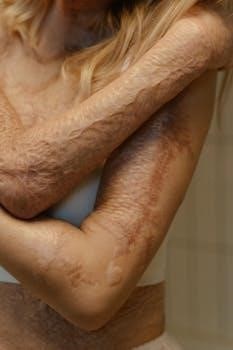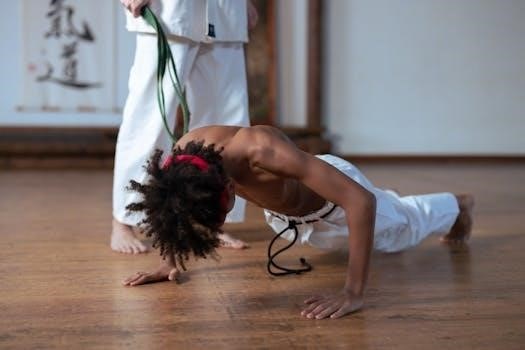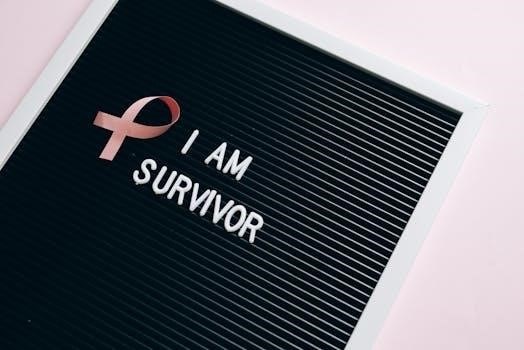Understanding Internalized Homophobia
Internalized homophobia refers to the conscious, subconscious, or unconscious acceptance by LGBTQ+ individuals of negative societal attitudes and beliefs toward homosexuality. This arises from being socialized within heteronormative cultures. These cultures assert that heterosexuality is the only valid orientation.
Definition and Origins of Internalized Homophobia
Internalized homophobia represents the internalization of societal prejudices against LGBTQ+ individuals, leading to negative self-perception. It stems from growing up in heteronormative societies, where heterosexuality is deemed the standard. These societies often transmit messages that being LGBTQ+ is wrong, different, or less desirable.
The origins lie in the pervasive heterosexism ingrained within cultural institutions and societal norms. These messages are absorbed from a young age, shaping subconscious beliefs about self-worth. This internal conflict manifests as shame, self-hatred, and anxiety. Individuals may attempt to suppress their true identities to conform to societal expectations, which can lead to significant psychological distress. Understanding these origins is crucial for dismantling internalized homophobia.
Impact on Mental Health⁚ Shame, Self-Hatred, and More
Internalized homophobia significantly impacts mental well-being, manifesting as shame, self-hatred, anxiety, and depression. These feelings arise from the conflict between one’s true identity and the internalized negative beliefs about being LGBTQ+.
Shame becomes a central emotion, leading individuals to conceal their sexual orientation or gender identity, which further exacerbates feelings of isolation. Self-hatred develops as individuals internalize societal prejudices, directing anger inward. This can result in low self-esteem and a negative self-image. The constant pressure to conform leads to chronic anxiety and fear of rejection. Untreated internalized homophobia can contribute to severe mental health issues, including suicidal ideation, underscoring the need for support and intervention.
Recognizing internalized homophobia involves identifying its subtle manifestations in thoughts and behaviors. These signs can include self-deprecating thoughts about one’s identity or discomfort with public displays of affection within LGBTQ+ relationships.
Signs and Manifestations in Thoughts and Behaviors
Identifying internalized homophobia requires a keen awareness of one’s own thoughts, feelings, and actions. Individuals may exhibit self-hatred, shame, fear, anxiety, or depression related to their sexual orientation or gender identity. These feelings can manifest as discomfort or disgust toward other LGBTQ+ individuals, or attempts to distance oneself from the LGBTQ+ community.
Other signs include making negative comments about LGBTQ+ issues, suppressing one’s own identity, or constantly seeking validation from heterosexual individuals. One might experience difficulty accepting compliments, or feel the need to overcompensate by conforming to heteronormative expectations. Actively participating in homophobic jokes or conversations can also signal underlying internalized homophobia. Recognizing these signs is the first step to overcoming them.

Recognizing Internalized Homophobia
Identifying Internalized Homophobia in Relationships
Internalized homophobia can significantly affect LGBTQ+ relationships, leading to various challenges and insecurities. One partner may exhibit discomfort with public displays of affection, fearing judgment or discrimination. This can manifest as resistance to holding hands, kissing, or even acknowledging the relationship in certain social settings.
Individuals struggling with internalized homophobia might also experience jealousy or possessiveness, stemming from a fear of losing their partner to someone of the opposite sex. They might question the validity or permanence of their relationship, comparing it unfavorably to heterosexual relationships. Furthermore, someone may tell others in the LGBTQIA community that there are right and wrong ways of being on the spectrum.
Communication issues can arise as one partner avoids discussing their sexuality or feelings related to their identity. Recognizing these patterns is crucial for addressing internalized homophobia and fostering healthier, more supportive relationships. Open and honest conversations are a must!
Overcoming internalized homophobia involves intentional effort and commitment to self-love and acceptance. This journey demands time, effort, and support, but is entirely possible by acknowledging your feelings and practicing self-compassion to heal.
Self-Reflection and Mindfulness Practices
To overcome internalized homophobia, start with honest self-reflection. Identify the negative beliefs you hold about your sexual orientation or gender identity. Challenge these beliefs by questioning their origin and validity. Are they based on your own experiences or societal messages?
Mindfulness practices can help you become more aware of your thoughts and feelings without judgment. This awareness allows you to observe and understand the impact of internalized homophobia on your mental well-being. Techniques like meditation and deep breathing exercises can help you manage anxiety and self-doubt.
Regularly practicing self-compassion is crucial. Treat yourself with the same kindness and understanding you would offer a friend. Acknowledge your struggles and celebrate your strengths. Remember that overcoming internalized homophobia is a process, and it’s okay to have setbacks.

Strategies for Overcoming Shame and Self-Hatred
The Role of Therapy and Counseling
Therapy and counseling play a pivotal role in overcoming internalized homophobia by providing a safe space to explore feelings and develop coping strategies. A therapist specializing in LGBTQ+ issues can offer guidance in challenging negative self-perceptions and building self-acceptance. They can help you identify the root causes of your internalized homophobia and develop healthier thought patterns.
Therapy provides tools for processing difficult emotions like shame, self-hatred, and anxiety. Cognitive Behavioral Therapy (CBT) can help you identify and change negative thought patterns, while Acceptance and Commitment Therapy (ACT) can promote self-compassion and acceptance. Seeking professional help is a sign of strength, demonstrating a commitment to personal growth and well-being.
Therapists can also help you navigate relationship challenges and build healthier connections with others.
Connecting with LGBTQ+ individuals and allies provides invaluable support and validation, fostering a sense of belonging and reducing feelings of isolation. This community offers a safe space for sharing experiences and building resilience against societal biases.
Connecting with LGBTQ+ Individuals and Allies
Humans heal best through relationships, especially with caring individuals who understand the LGBTQ+ experience in our society. Engaging openly in conversations about sexual orientation, identity, and mental health can foster a more supportive environment that encourages healing and acceptance. Seeking support, and sometimes professional intervention is also crucial.
Finding others who share similar experiences can be incredibly empowering. This connection combats isolation and provides a platform for sharing stories and strategies for coping with internalized homophobia. Support groups, both online and in-person, offer a safe space to connect with others who understand. These connections can be a powerful antidote to the feelings of shame and self-hatred that internalized homophobia fosters. Allies play a vital role by offering unwavering support and advocating for LGBTQ+ rights.
Building a strong network allows for the development of self-compassion, and challenging societal norms becomes easier. Overcoming internalized homophobia is an ongoing process.

Building a Supportive Community
Finding Acceptance and Validation
Acceptance and validation are cornerstones in overcoming internalized homophobia. These are concepts I became familiar with through my own personal experience recognizing it, and working through it. Seeking validation from within, and from supportive communities, is essential for dismantling negative self-perceptions.
Actively challenge the negative self-talk fueled by internalized homophobia. Replace self-criticism with affirmations of self-worth and acceptance. Recognize that your worth is not defined by your sexual orientation or gender identity. Celebrate your identity and embrace your authentic self. Engaging in activities that bring joy and fulfillment can further enhance self-acceptance and validation. Surround yourself with people who celebrate you for who you are and provide a safe space for self-expression.
Remember, overcoming internalized homophobia is a journey, not a destination. Be patient with yourself, celebrate your progress, and never stop seeking acceptance and validation.
We all live in a heterosexist society. Dismantling deeply entrenched systemic homophobia is a complicated undertaking. Societal messages impact all of us, whether or not we acknowledge it, because we are taught the values of our society.
Understanding the Impact of Societal Messages
We all live in a heterosexist society where children pick up messages that being attracted to the same gender is somehow bad. These messages lead individuals to internalize negative beliefs about themselves. The overwhelming message they get is clear⁚ I’m bad, I’m wrong, the world is dangerous. Dismantling systemic homophobia is a complicated undertaking.
Societal messages about gayness impact all of us, whether or not we acknowledge it. We are taught the values of our homophobic, heterosexist, discriminatory culture. This leads to misdirected anger at ourselves. It is important to understand because we need to reprogram messages of self-acceptance, compassion, tolerance, and understanding.
Even within the LGBTQIA alphabet, we’re prone to biases and in-fighting. This isn’t about judgment, it’s about awareness and self-compassion. It’s hard to encourage letting go of self-hatred if we don’t understand the role homophobia plays in its development.

Challenging Societal Norms and Heteronormativity
Promoting Self-Acceptance and Self-Love
Overcoming internalized homophobia is an ongoing process that demands time, effort, and support. It requires intentional effort and a commitment to self-love. By acknowledging your feelings and practicing self-compassion, you can begin to heal and embrace your authentic self.
Make a conscious choice to identify and eliminate your internalized homophobia. Remind yourself why you are doing this. For example, your goal might be to overcome the negative feelings and to feel happier. Continuous learning and personal development activities can boost self-esteem and resilience.
Humans heal best through relationships and that includes relationships with caring therapists. There are steps you can take to make your mindset a healthy and loving one. Engage openly in conversations about sexual orientation, identity, and mental health. It fosters a supportive environment that encourages healing and acceptance.
